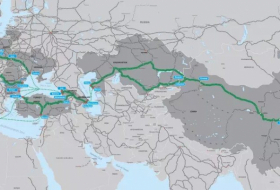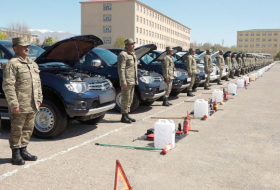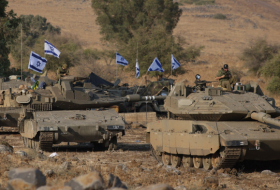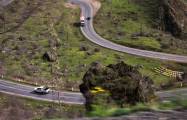Each year, the Wildlife Photographer of the Year contest offers a peek into the lives of species around the world. It's developed and produced by the Natural History Museum in London, and awards photographers whose work inspires us to consider our place in the natural world and our responsibility to protect it.
This year, photographers from 100 countries submitted 48,000 entries, and contest judges announced a group of winners in October. Then the public got to vote in the people's choice award contest.
The public's favorite photo, taken by Sam Rowley, shows two mice fighting over scraps of food on a London Underground platform. The rodents' squabble only lasted a split second, Rowley said. Then one mouse grabbed the crumb and the subterranean denizens went their separate ways.
Rowley added that eh wasn't afraid to lie down on the train platform in order to capture the mouse duel.
"I hope it shows people the unexpected drama found in the most familiar of urban environments," he said in a press release.
The contest organizers curated a shortlist of front-runners for the people's choice award. Many of those images, including four "highly commended" runners-up, throw into sharp relief the relationships between creatures — mothers and cubs, predators and prey, people and animals. One photo captures a baby jaguar and its mother toting a large anaconda, while another shows a herd of camouflaged reindeer.
Here are the other top photographs from this year's people's choice contest.
Photographer Francis De Andres named this photo "Spot the Reindeer" — and for good reason.
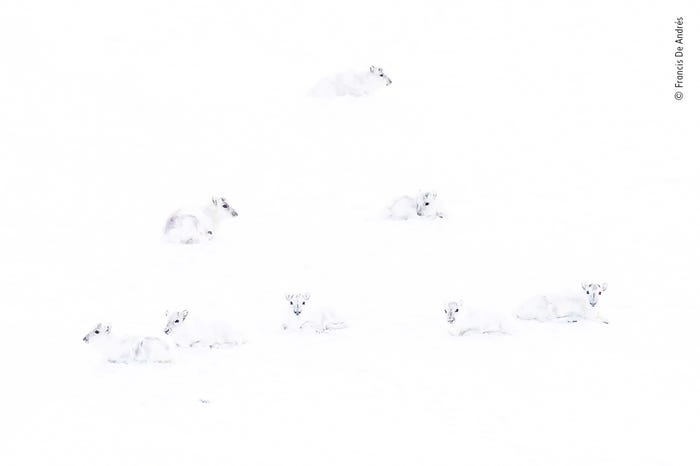
Arctic reindeers' pristine white coats help them camouflage in the snow of Svalbard, Norway. Francis De Andres/Wildlife Photographer of the Year
This image was one of four "highly commended" runners-up in the people's choice award contest.
De Andres braved the freezing temperatures of Norway's Svalbard archipelago to capture these camouflaged, yet curious, white arctic reindeer.
Another highly commended image shows a jaguar cub helping its mother carry a giant anaconda out of the Três Irmãos river in Brazil.
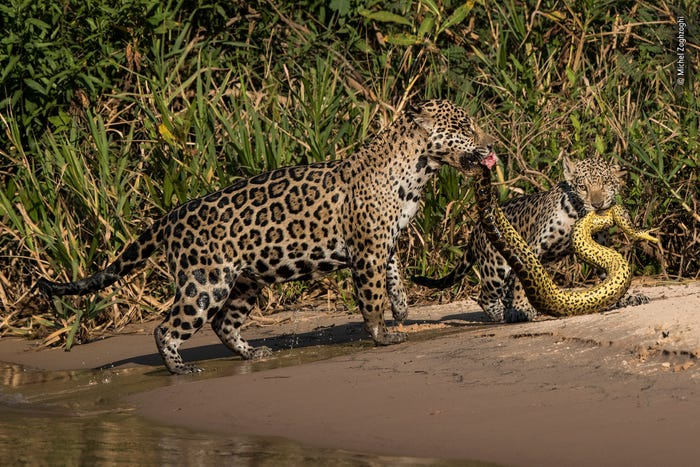
A jaguar and her cub carry an anaconda in Pantanal, Brazil. Michel Zoghzoghi / Wildlife Photographer of the Year
The two hunters and their prey mesmerized photographer Michel Zoghzoghi, who was boating on the river.
Jaguars are known to eat snakes, fish, turtles, deer, tapirs, and caimans.
Orangutans have been used in performances at Safari World in Bangkok (and many other locations) for decades, despite opposition from animal-rights advocates.
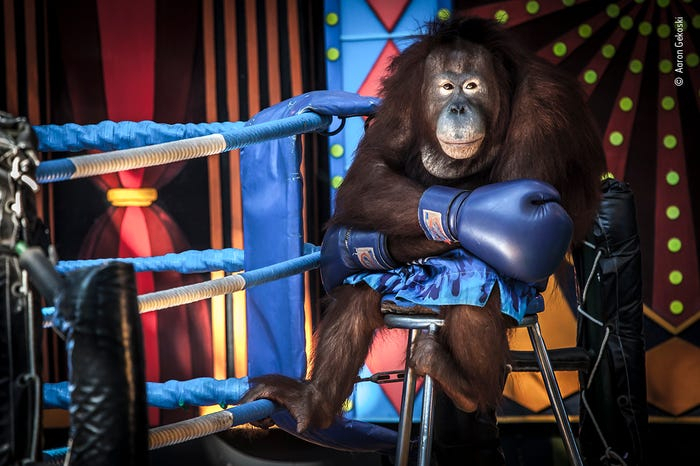
A dressed-up orangutan ringside at a Safari World performance in Bangkok, Thailand. Aaron Gekoski/Wildlife Photographer of the Year
In 2004, the shows were temporarily halted due to international outcry. But today, they continue. Twice a day, hundreds of people pay to watch orangutans box, dance, and play the drums.
This runner-up photo by Aaron Gekoski, shows one of these animals sitting morosely, clad in boxing shorts and gloves.
The final highly commended photo shows an orphaned black rhino named Kitui with its surrogate parent.

An orphaned black rhino nuzzles Elias Mugambi, a ranger at Lewa Wildlife Conservancy in northern Kenya. Martin Buzora / Wildlife Photographer of the Year
Park ranger Elias Mugambi often spends weeks away from his own family caring for orphaned black rhinos like Kitui.
The orphans are placed in wildlife sanctuaries like this one after their mothers are killed by poachers.
Kenyan photographer Clement Mwangi's photo, titled "What a poser," was chosen as one of 17 other front-runners in the contest.

A leopard basks under the sun in Kenya's Maasai Mara National Reserve. Clement Mwangi / Wildlife Photographer of the Year
Mwangi said that sometimes as a wildlife photographer, you can miss the exceptional while looking for the unusual.
He spent time observing this leopard in Maasai Mara National Reserve as she soaked up the warm rays of the setting sun.
Photographer Ingo Ardnt captured another serene wildcat on camera in Chile's Torres del Paine National Park. He followed these pumas for over two years.
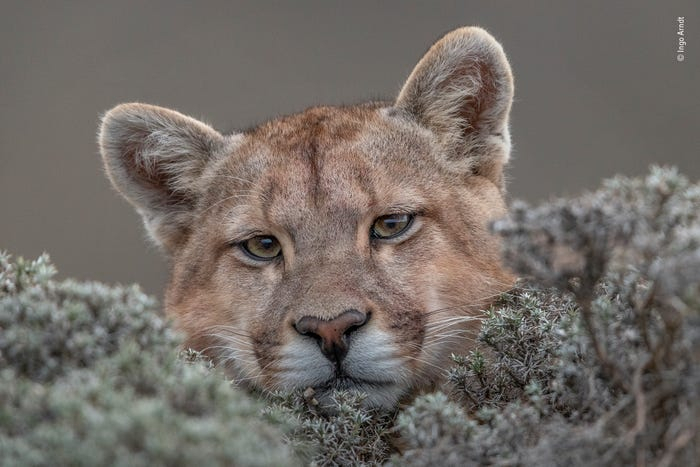
A female puma gazes through the roughage in Torres del Paine National Park, Chile. Ingo Ardnt / Wildlife Photographer of the Year
This female eventually became so used to his presence that one day she fell asleep while Ardnt was nearby. That enabled him to capture this portrait of her relaxed face as she awoke.
Mothers and their young make for especially compelling wildlife photography. In this image, Marion Volborn caught a grizzly mother and her cub scratching that unreachable itch.
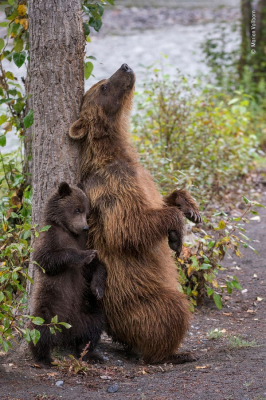
A grizzly bear and her cub by the Nakina River in British Columbia, Canada. Marion Volborn / Wildlife Photographer of the Year
During a trip to the Nakina River in British Columbia, Volborn spotted this bear and her cub approaching a tree. After the grizzly started to rub her back against the trunk, the cub imitated its mother.
Volborn titled this picture "Mother knows best."
This Caribbean flamingo's shock of pink hides her baby, which pokes out from under its mother's wing to be fed.
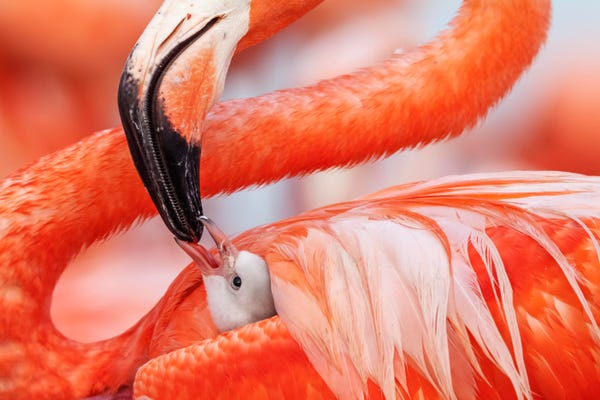
A mother Caribbean flamingo and her chick, Yucatán, Mexico. Claudio Contreras Koob / Wildlife Photographer of the Year
The Ría Lagartos Biosphere Reserve in Mexico's Yucatán state is home to the country's largest flock of Caribbean flamingos. This chick is less than five days old; after another week, it will leave its nest and join other youngsters in the colony.
Photographer Steve Levi spent 10 days searching for this polar bear mother and her cubs in Manitoba, Canada.
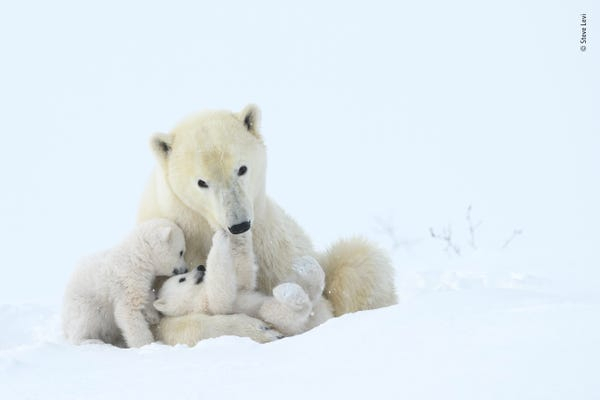
A polar bear mother and her two cubs in Wapusk National Park, Canada. Steve Levi / Wildlife Photographer of the Year
Levi encountered this polar bear family in March, before they began a long journey north to the sea ice, where the mother could feed.
But not all animals are lucky enough to live with their mothers or families.
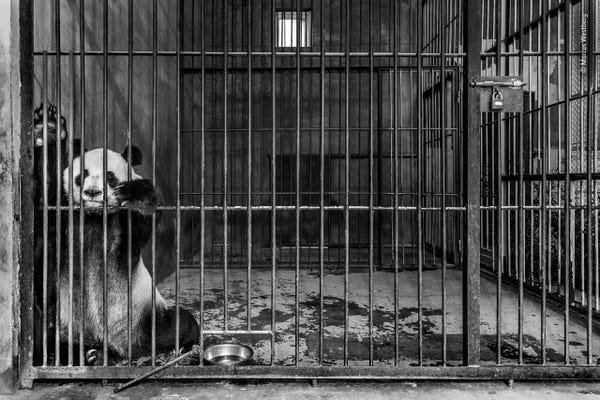
A giant panda sits in its cage in a breeding center in Shaanxi, China. Marcus Westberg / Wildlife Photographer of the Year
Giant-panda breeding centers like the one pictured above are growing in popularity in China.
According to photographer Marcus Westberg, it's unclear how these centers benefit the species, since wild pandas are increasing in number and many breeders lack a realistic plan for how to release the pandas into the wild.
Some animal moms-to-be, meanwhile, start preparing for the big event before their offspring arrives. At first glance, photographer Stefan Christmann thought these emperor penguins were caring for an egg. It turned out to be a snowball.
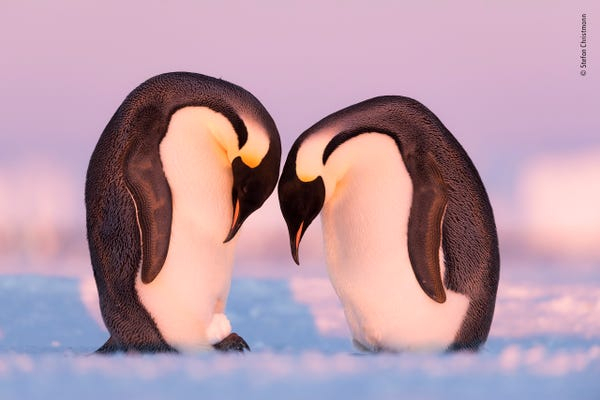
Two emperor penguins in Atka Bay, Antarctica. Stefan Christmann / Wildlife Photographer of the Year
The photographer thinks this penguin couple was practicing transferring the snowball between them as if it were an egg.
A female emperor penguin typically lays one egg a year in May or June. Then she must carefully transfer the egg to her partner, who keeps the egg safe in a pouch between its legs. Males hold and warm the eggs for months while the females return to the sea to feed.
Emperor penguins form colonies that can include up to 25,000 individuals. Photographer Yaz Loukhal took a helicopter flight then trekked through thick snow in order to photograph this group.

An emperor penguin colony on Snow Hill Island, off the east coast of the Antarctic Peninsula. Yaz Loukhal / Wildlife Photographer of the Year
His efforts earned him an incredible view of the colony.
Photographer Michael Schober's image showcases a different type of animal clan: a huddle of Austrian marmots. He titled the photo "Family get-together."

Five marmots in the mountains of Hohe Tauern National Park, Austria. Michael Schober / Wildlife Photographer of the Year
Marmots have become accustomed to the presence of humans in Austria's Hohe Tauern National Park. Allowing people to observe and photograph them at close range benefits the marmots, since human company deters predators like golden eagles.
Whales also travel in groups — theirs are called pods — and hunt cooperatively. Photographer Jake Davis snapped this photo of a humpback whale diving for fish while its pod swam nearby.
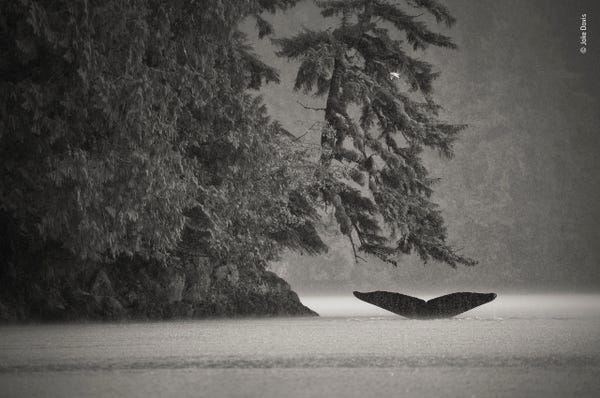
A humpback whale's fluke is just visible over the waterline off the coast of Great Bear Rainforest in British Columbia, Canada. Jake Davis / Wildlife Photographer of the Year
This pod was carrying out a type of hunting called bubble-net feeding. Once the leader whale locates fish, the other members of the pod swim in circles while blowing bubbles out their blowholes. This action creates a natural net, trapping the fish for a feast.
BBC
More about: animals











